When we think of turtles, Cyprus isn't the first place that comes to mind — we tend to envisage a tropical island somewhere in the Pacific or in the Caribbean instead. But Cyprus doesn't stop surprising us and sometimes it feels as if this small Mediterranean island has it all, including turtles. In fact, Cyprus is a breeding and feeding ground for two rare varieties that travel here from far away to lay their eggs. There are a few turtle places and hideouts dispersed throughout the island — both in the north and in the south. So if you're curious about turtles in Cyprus, today we will tell you all about them. And, of course, we will let you know where to see turtles in South Cyprus.
Let's dive deeper into the turtle world!
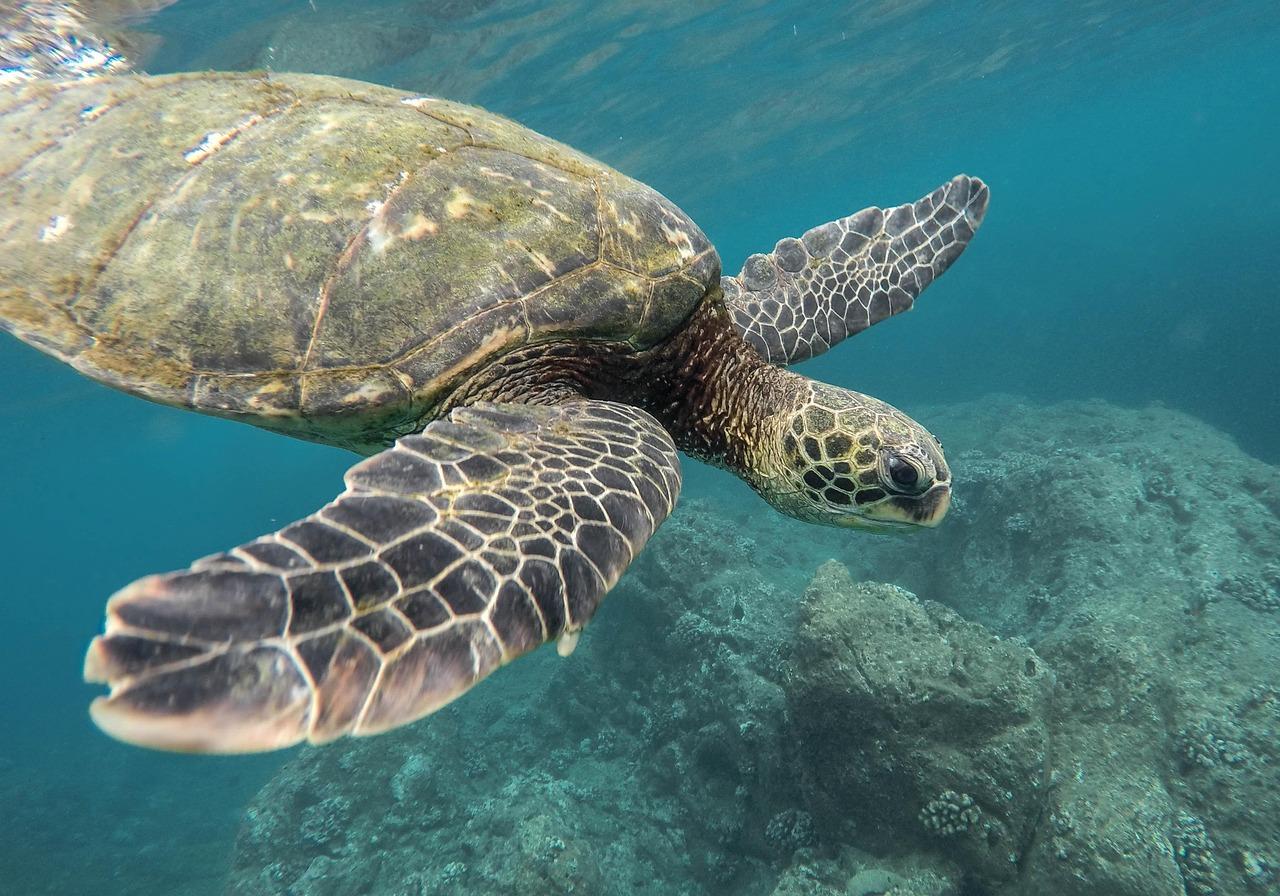
Which varieties can be found in Cyprus
Loggerhead (Caretta caretta)
These carnivorous species are distinguished by a heart-shaped shell with reddish-brown colour spots. Their bulky heads with strong jaws allow them to crush crabs and crayfish. Adults reach up to 90—110 cm in length and weigh up to 70—170 kg.
They usually come here to lay their eggs from May to August and you can see them along the Paphos coastline. But, they can be spotted at other times too, as they come to the island for feeding.
Green turtle (Chelonia Mydas)
These species are herbivores, feeding mostly on moss seagrass. They are characterised by greenish to olive-brown oval shaped shell and a smaller more streamlined head, compared to Loggerheads.
The adults reach up to 90—120 cm in length and weigh up to 110—190 kg.
Interesting fact: Green turtles got their name from the greenish fat under their shell, attributed to their herbivore diet.
Their main breeding grounds are located in the Paphos area around Toxeftra, but they can be spotted along Akrotiri shoreline too. Although, they are more rare visitors compared to their counterparts.
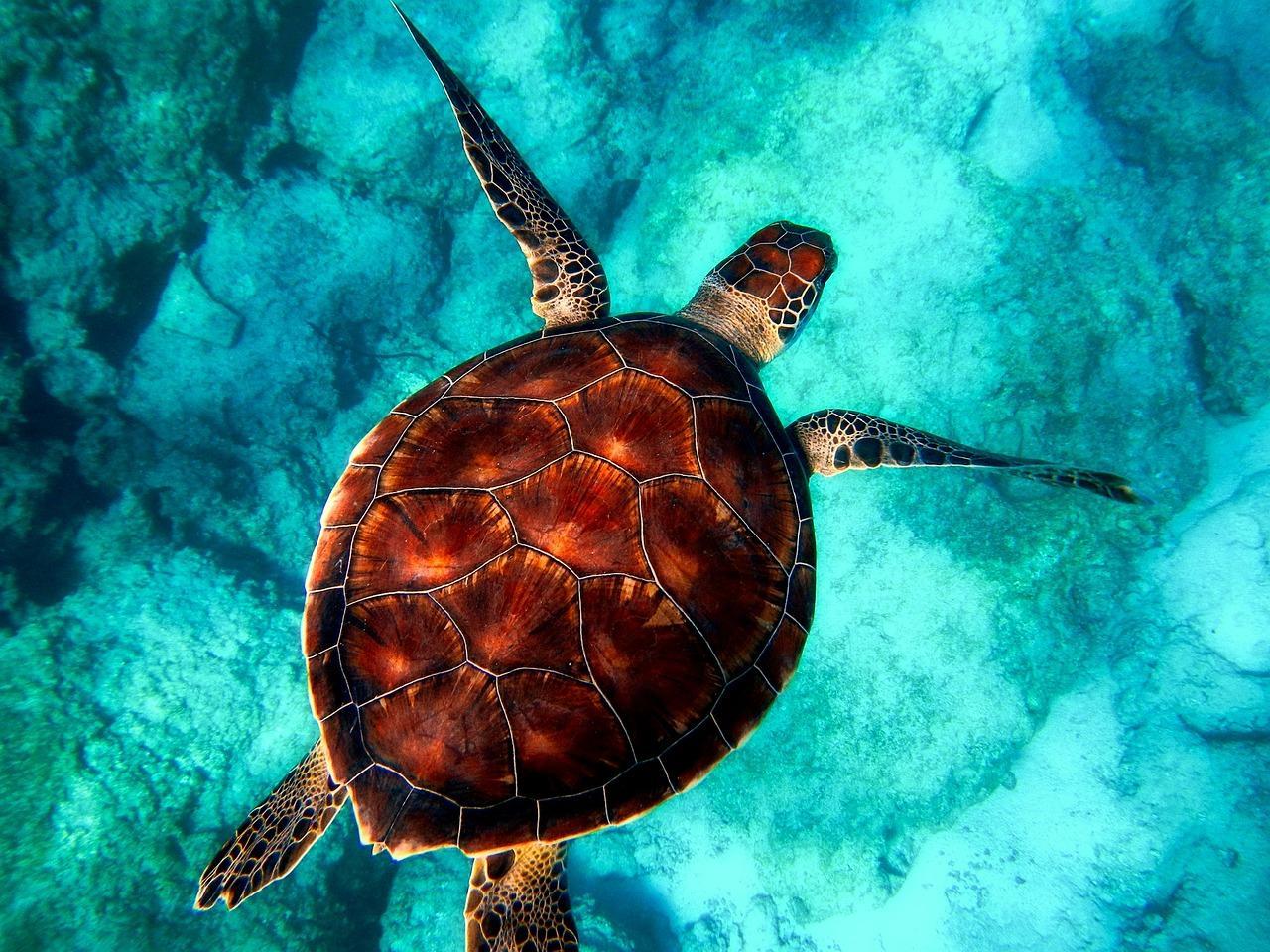
The turtle lifecycle
Turtles are truly fascinating creatures and their lifecycle is equally intriguing, albeit hidden from the human eye. It can be divided into several distinctive periods — some stretching over the decades.
Once the eggs have been laid, it usually takes around 45—60 days for them to hatch. Hatchlings rush towards the sea, where their next important life stage begins, otherwise known as a «drift phase». During this time juveniles simply drift in open waters, being guided by the open ocean currents. Thus, they roam freely, feeding on plankton until they grow large enough to avoid predators.
This «drift phase» can stretch over several years. When the juveniles grow large enough, the «coastal feeding» stage begins, which usually lasts for about 10—20 years. During this time they frequent Mediterranean shores, in search of food. When they reach the age of 30—35 years, they become adults, ready for breeding. Normally, at this stage they tend to return to their nativity beach, guided by their instincts.
Mating usually occurs in open waters near their nesting grounds. After laying their eggs, females usually return to the feeding grounds and the same cycle repeats over the decades. Most turtles live up to 50 years, whilst some can reach the age of 70—80 years.
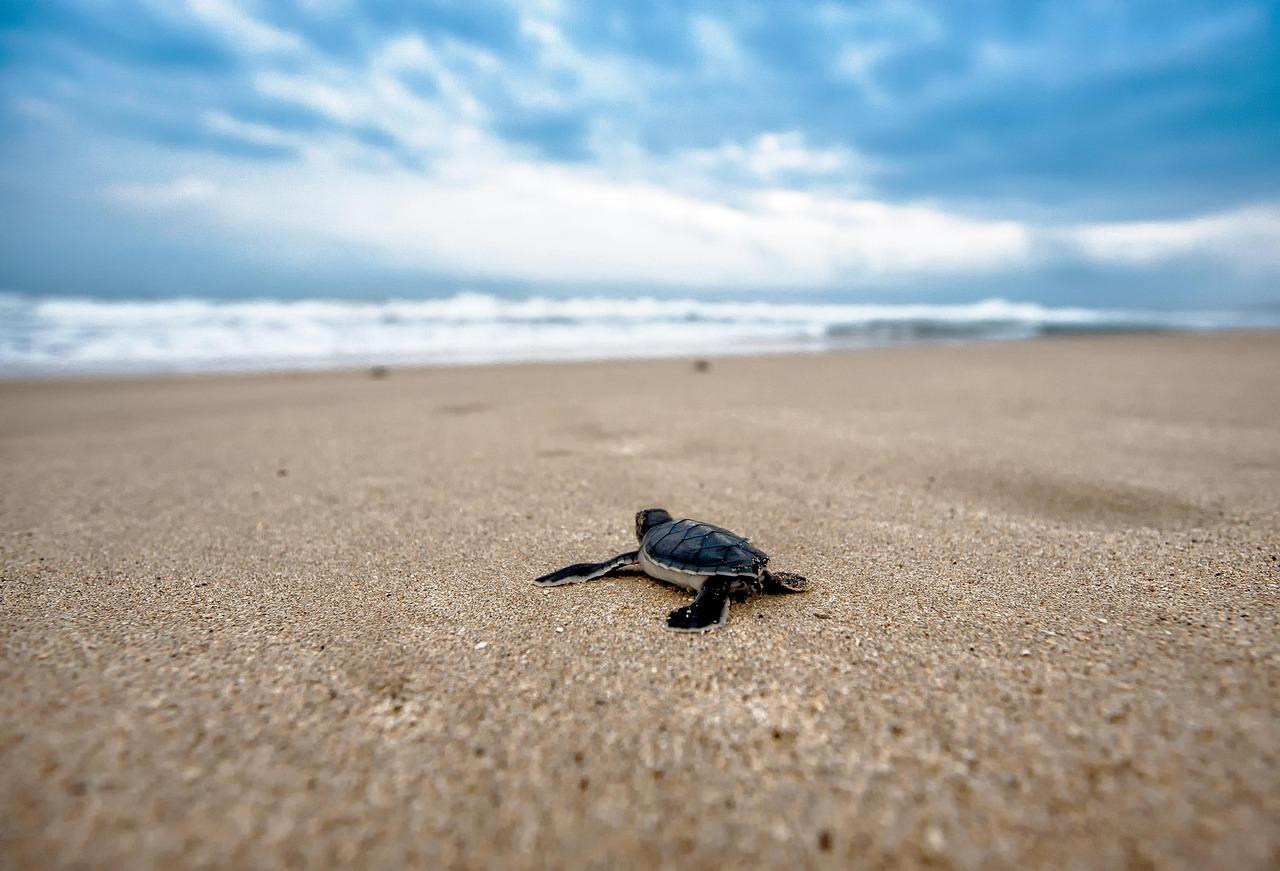
Nesting process
In summer from late May to early August, the turtles start migrating to their birthplace.
Interesting fact: The process of returning to nativity grounds is called «natal homing». The turtles use a combination of methods to identify and find those areas: magnetic imprinting and environmental cues, such as scents of the sand and water and the shape of the coastline.
Usually, to avoid heat and predators, the female comes onto the shore in late evening or night — between 9.00 pm and 5.00 am. First, she selects an appropriate spot with the right sand texture, moisture and inclination. Then she starts digging out the nest with her hind flippers. The nests reach 40—50 cm in depth for Loggerheads and 70—80 cm for Green turtles.
After the nest is complete, the female starts laying her eggs. It's a slow process, when the female remains in a form of a trance, completely undisturbed by external activities.
Typically, the Loggerheads lay around 70—120 eggs, whilst the Green turtles can lay up to 80—150.
Interesting fact: Sand temperature affects the gender of future hatchlings: warmer sand creates more females, whilst cooler sand leads to more males.
After laying her eggs, the female covers the nest with sand, camouflaging the area and returns to the sea. This process can be repeated 2 to 4 times in each season.
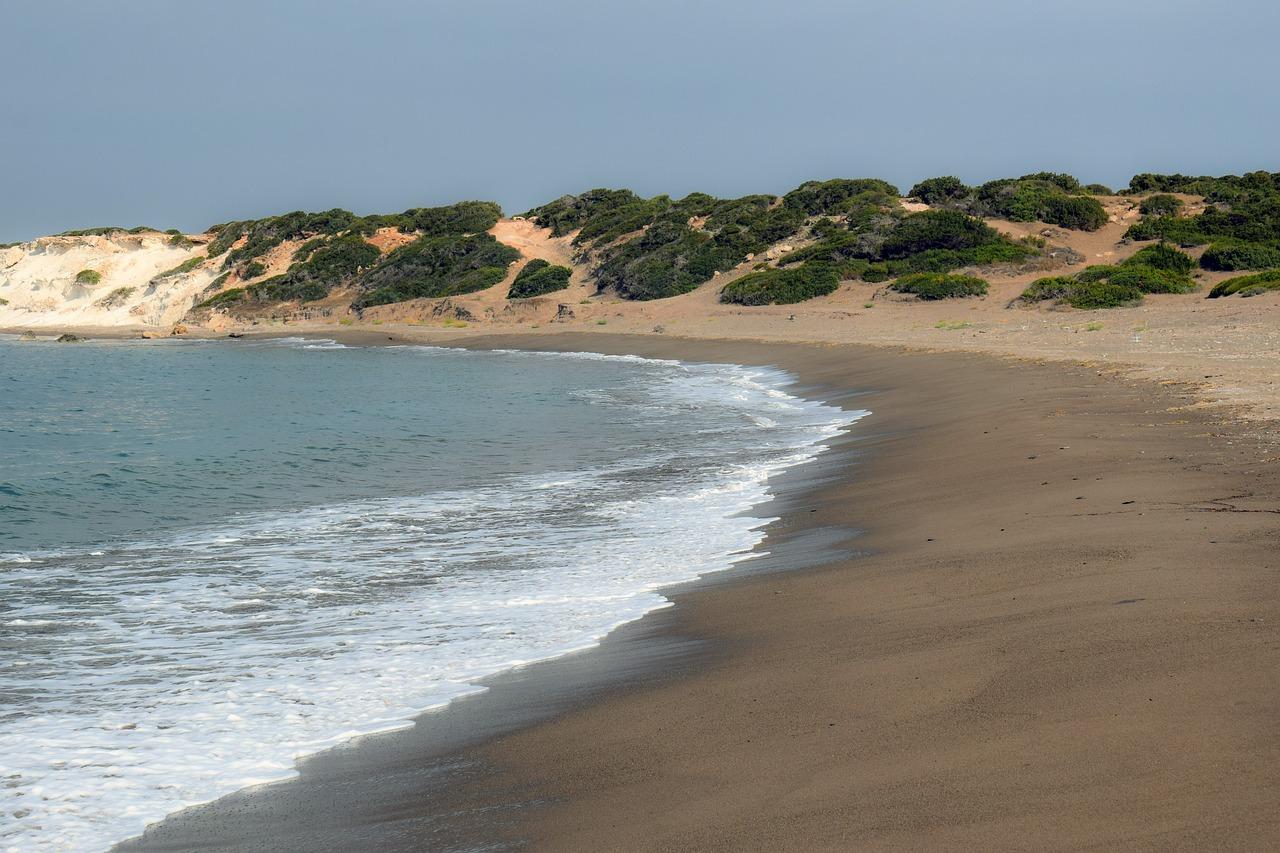
Where to spot turtles in Cyprus
Lara—Toxeftra (Paphos)
Located in the pristine area of Akamas peninsula, both Lara Bay and Toxeftra beach are prime spots if you want to see Loggerhead and Green Turtles. The unspoiled scenery acts as a perfect backdrop for turtle-watching.
Toxeftra provides perfect conditions for Green turtles and is home to around 80% of their nests in Cyprus. This is a Specially Protected Area of Mediterranean Importance (SPAMI) and a Natura 2000 conservation site.
Polis–Gialia Beach
Situated in the northwestern part of Cyprus, in the Paphos region, this area stretches from the town of Polis to Gialia village and includes Polis beach, Latchi beach, and Gialia beach.
This area is a part of Natura 2000 network and is the most important spot for Loggerheads in Cyprus.
Akrotiri Region
This area is located on the Akrotiri Peninsula and comprises Akrotiri Bay, Episkopi Bay and Cape Pyla. If you are lucky, here you can see both types of turtles and observe their hatching.
Pervolia—Kiti
Located just outside of Larnaca, Kiti Beach and Pervolia Beach have been attracting some Loggerhead turtles. In 2020 alone 50 Loggerhead nests were recorded at the Caretta Beach area.
Although it is not a nesting site, Cape Greco near Ayia Napa offers the opportunity to spot Loggerhead and Green turtles throughout the year. Both are frequent visitors of Konnos Bay, Blue Lagoon and Marine Park.
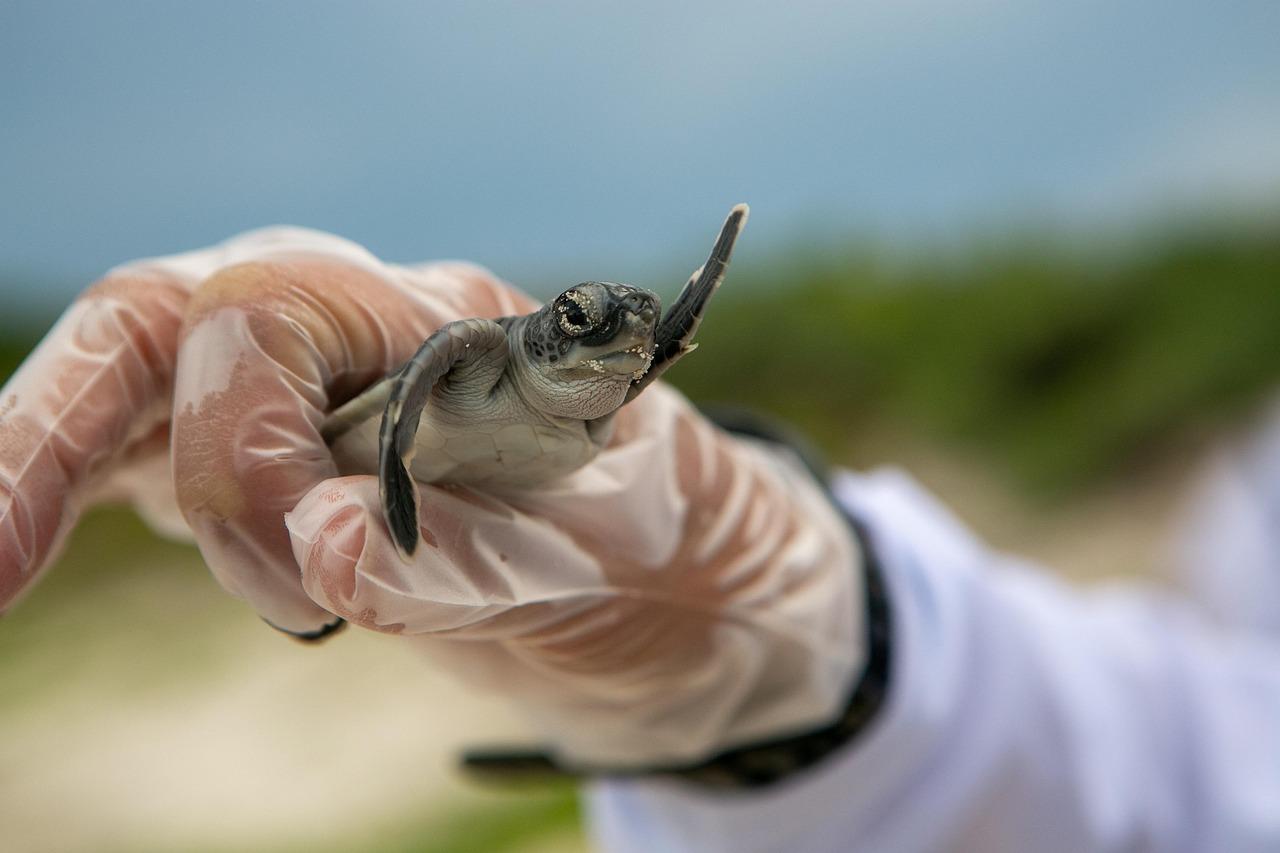
Conservation efforts
Turtles are amazing, yet very fragile creatures, especially vulnerable during the nesting period. Whilst predators pose a major threat, human activity also interferes with their ecosystem. Factors like urbanisation, pollution and climate change affect their habitat. That’s why conservation initiatives are so important.
Important fact: Hatchlings follow the light and reflection of the moon in order to find their way from the beach into the water. Artificial lights from surrounding houses, roads can disorient them.
Cyprus takes coastal conservation seriously and many initiatives for safeguarding their population have taken effect lately. For instance, all major nesting sites are declared designated Natura 2000 protected areas.
Also, non-government organisations, such as Terra Cypria and EuroTurtles with their LIFE project engage in nest monitoring and protection activities, habitat conservation and public education programs, raising awareness of the importance of turtle protection. Regular research activities are conducted by scientists and student groups, including migration tracking and genetic studies. Whilst tagging and satellite tracking is still common, drones become increasingly popular as a non-invasive tracking equipment.
Some practical steps are taken to protect the nests:
- Nest identification.
- Placing cages over the nests to protect them from predators.
- Regular beach monitoring by conservation groups.
- Banning night-time beach access and vehicle use.
- Prohibiting beach umbrellas.
- Night patrols for the duration of the nesting season.
- Public awareness signs
- Beach lighting control to prevent hatchling disorientation.

Observation tips
- Keep your distance and respect their privacy
- Avoid loud noises
- Avoid flash photography at night
- Don’t walk on marked nests
- Avoid using artificial lighting
- Dawn/dusk are the best times to observe the hatchlings.
- Visitors are urged not to assist hatchlings find the way to the sea — only volunteers can do that.

Turtles, just like all animals, make us better human beings. They teach us to appreciate the beauty of nature and its ingenuity. We hope this article has ignited your interest in these majestic creatures and Cyprus' biodiversity.
Have you ever spotted turtles in Cyprus? Let us know in the comments!
Read also

